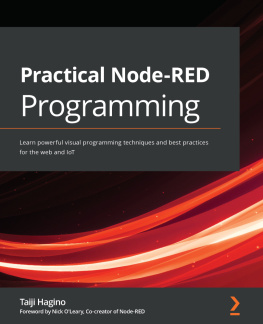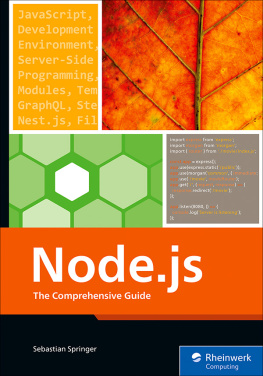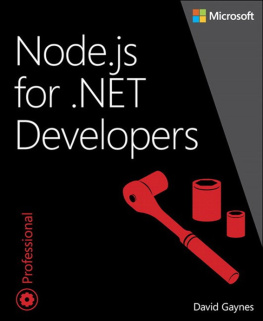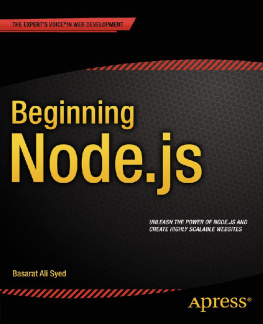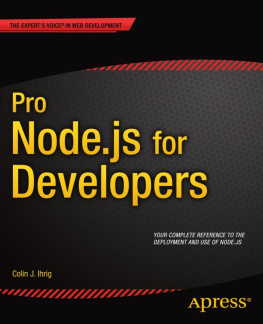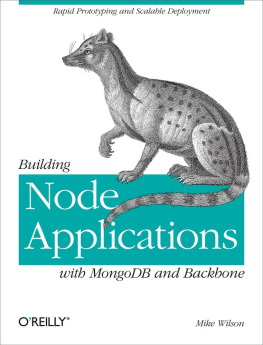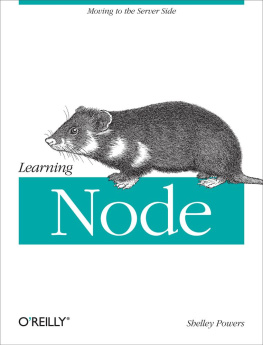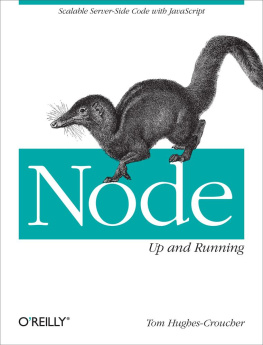Taiji Hagino - Practical Node-RED Programming: Learn powerful visual programming techniques and best practices for the web and IoT
Here you can read online Taiji Hagino - Practical Node-RED Programming: Learn powerful visual programming techniques and best practices for the web and IoT full text of the book (entire story) in english for free. Download pdf and epub, get meaning, cover and reviews about this ebook. year: 2021, publisher: Packt Publishing, genre: Computer. Description of the work, (preface) as well as reviews are available. Best literature library LitArk.com created for fans of good reading and offers a wide selection of genres:
Romance novel
Science fiction
Adventure
Detective
Science
History
Home and family
Prose
Art
Politics
Computer
Non-fiction
Religion
Business
Children
Humor
Choose a favorite category and find really read worthwhile books. Enjoy immersion in the world of imagination, feel the emotions of the characters or learn something new for yourself, make an fascinating discovery.
- Book:Practical Node-RED Programming: Learn powerful visual programming techniques and best practices for the web and IoT
- Author:
- Publisher:Packt Publishing
- Genre:
- Year:2021
- Rating:5 / 5
- Favourites:Add to favourites
- Your mark:
Practical Node-RED Programming: Learn powerful visual programming techniques and best practices for the web and IoT: summary, description and annotation
We offer to read an annotation, description, summary or preface (depends on what the author of the book "Practical Node-RED Programming: Learn powerful visual programming techniques and best practices for the web and IoT" wrote himself). If you haven't found the necessary information about the book — write in the comments, we will try to find it.
Use a low-code programming approach to create event-driven applications from scratch by wiring together hardware devices, APIs, and online services
Key Features- Discover how you can automate the Internet of Things (IoT) without writing huge blocks of code
- Learn how to wire together flows using a browser-based visual editor
- Handle IoT data with little to no coding knowledge
Node-RED is a free and open source flow-based programming tool used to handle IoT data that allows programmers of any level to interconnect physical I/O, cloud-based systems, databases, and APIs to build web applications without code.
Practical Node-RED Programming is a comprehensive introduction for anyone looking to get up to speed with the Node-RED ecosystem in no time. Complete with hands-on tutorials, projects, and self-assessment questions, this easy-to-follow guide will help you to become well versed in the foundations of Node-RED. Youll learn how to use Node-RED to handle IoT data and build web applications without having to write complex code. Once youve covered the basics, youll explore various visual programming techniques and find out how to make sample flows as you cover web development, IoT development, and cloud service connections, and finally build useful real-world applications.
By the end of this book, youll have learned how to use Node-RED to develop a real-world application from scratch, which can then be implemented in your business.
What you will learn- Understand the history of Node-RED and why you need to learn a flow-based programming tool
- Use Node-RED to build Node.js-based applications
- Handle data for IoT devices using Node-RED flows
- Explore advanced Node-RED features such as connecting repositories and customizing the flow editor
- Find out what the MQTT protocol is and how it relates to Node-RED
- Create and publish your own nodes and flows using the Node-RED library
This Node-RED book is for web developers and IoT engineers with some background in JavaScript and Node.js. Although not necessary, familiarity with the concepts of electronics will help you to make the most out of this book.
Table of Contents- Introducing Node-RED and Flow-based programming
- Setting up the Development Environment
- Understanding Node-RED characteristics by creating basic flows
- Learning the Major Nodes
- Implementing Node-RED locally
- Implementing Node-RED in the Cloud
- Calling a Web API from Node-RED
- Using the Project Feature with Git
- Creating a ToDo application with Node-RED
- Handling sensor data on the Raspberry Pi
- Visualize data by creating a server-side application in the IBM cloud
- Developing a Chatbot Application Using Slack and IBM Watson
- Creating and publishing your own node on the Node-RED library
Taiji Hagino: author's other books
Who wrote Practical Node-RED Programming: Learn powerful visual programming techniques and best practices for the web and IoT? Find out the surname, the name of the author of the book and a list of all author's works by series.

